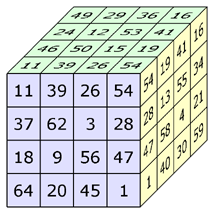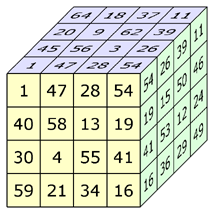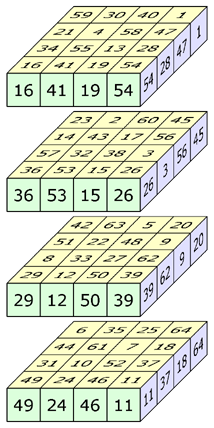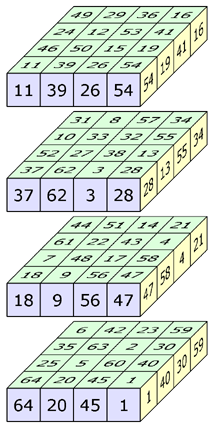|
Three aspects of the nearly perfect magic cube of order 4 Walter Trump - January 2, 2004 | ||

|

|

|

|

|

|
|
The 16 rows, 16 columns, 16 pillars and 24 diagonals are magic (sum = 130). The 4 triagonals have the sums: 100, 120, 140 and 160. Each of the 12 orthogonal planes contains a (non-normal) magic square. | ||


